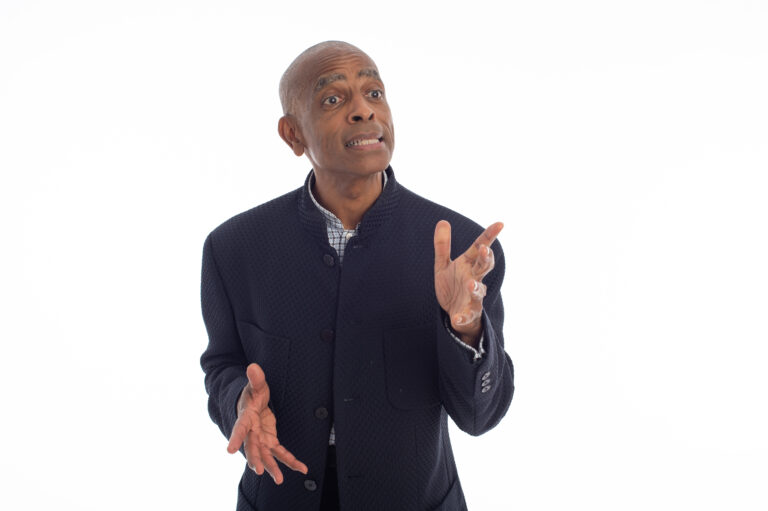It’s time to go back to school! That is both a reality and a metaphor in that it is also time to go back to the office! While children and adults return to the academic school year, many working adults begin to return to the office, not because summer is over. Instead because we are learning to live in a Covid environment. Now also known as a hybrid environment.

As such, many of us will continue to more easily misinterpret what is being communicated among us while we continue to master the virtual world that has become commonplace. Case in Point: While walking past two young men of color during the height of Covid, I overheard one say to the other, “That’s F’ed up that he can’t even call you back.”
What went through my mind were the number of calls that have not been returned to me in recent months. I recognized in that instant the sound of judgement emerging in my thoughts and feelings as I agreed silently with what was being expressed by the young man to his companion. I stopped myself and thought. I’m curious to see where this moment is leading me.
As I continued my walk passed the two men, I began to consider how easily we can assume another’s intention without having confirmation that we are correct in our thinking. In the case of the comment I overheard, one can assume the perpetrator was rude and inconsiderate for not returning the call. In that moment I was reminded that whomever hasn’t called me back recently could be the victim of the possible list of reasons below:
- Didn’t get the message
- Message caught in cyberspace
- Deleted by accident
- Intercepted by another message coming in at the same time and bumped
- Receiver lost their phone
- Connection permanently or temporarily disabled
- Receiver is sick or worse, passed away

The list can go on. All to say, we may not know what is happening in another’s life unless we are privy to it. Anything else we think we know is being made up in our own heads by us individually. We are the creators of stories with or without hard evidence. That is not something we necessarily think consciously when we are in creative mode. Just a thought! By virtue of age/experience I imagine the young men to be significantly younger than me by more than half my age.
My thoughts go to whom has been central in my life over the vast number of my years from grade school until now during which there were rarely many people of color in my personal nor professional life until I moved to Harlem, New York in 2012. Fast forward nearly a decade later, here in New York I find myself pondering how I’ve developed my self-confidence or the shadow side, false, self-confidence.
At the beginning of my second year in the 3rd grade, I attended a private school where my parents explained how best served my interest would be by my repeating the 3rd grade so that I can enter the 4th grade in a more ideal academic place than my previous public school education had prepared me. It rings very differently now, so many years beyond that event in my life. Yet, it had a lasting effect on me that, from time to time still rears its head. Metaphorically I’ve learned to tame that lion well and I no longer fear his roar. His bite has long since been dissolved as well.
From that event forward my life within an ethnic and culturally diverse neighborhood was fairly nonexistent. The exception is the time of my Sophomore and first quarter of my Junior high school experience during which I spent in a predominately African-American neighborhood on the south side of Houston where the social-economic norm is quite a bit lower than where I grew up on the Northwest side of town. I went to school in one neighborhood by day. I lived my life in a totally opposite neighborhood by nights and weekends.
I felt as though I did not fit in until I stopped trying. I was not really sure when that feeling passed, as it comes and goes depending on the climate, location where I happen to be, or by whom I’m surrounded at any given moment. You could say I’ve gotten comfortable being uncomfortable most of my life.
Nearly all my long term relationships have been with Irish Catholic, French, English, Italian, or other European influenced partners. Not much color in my intimate life. Therefore I’ve been surrounded by people for whom developing self-confidence did not seem much of a thought. That does not suggest we haven’t all faced challenges building our self-confidence. The distinction is that what society provided access for them, was not as high a degree was provided for the vast majority of my fellow people of color. I was an exception to a degree. Although the color of my skin posed certain restrictions or at least delays in my moving forward in life, I was fortunate to have opportunities and options not afforded to many people of color.
That life included and is most significantly defined in my family by the importance of education. Therefore when I look at the whole of my life, I see many examples of how I’ve come to be steeped in education as an educator. I invite you to become steeped in your own education by taking the Leadership Quiz and learn how you can contribute to your own and to the development of the people you lead in business, nonprofit, community and the world of equitable opportunities.
Next Month:
More on Powerful Questions
Expanding on The Hybrid Space
Videos:
How to Have a Hybrid Meeting That Works for Everyone















